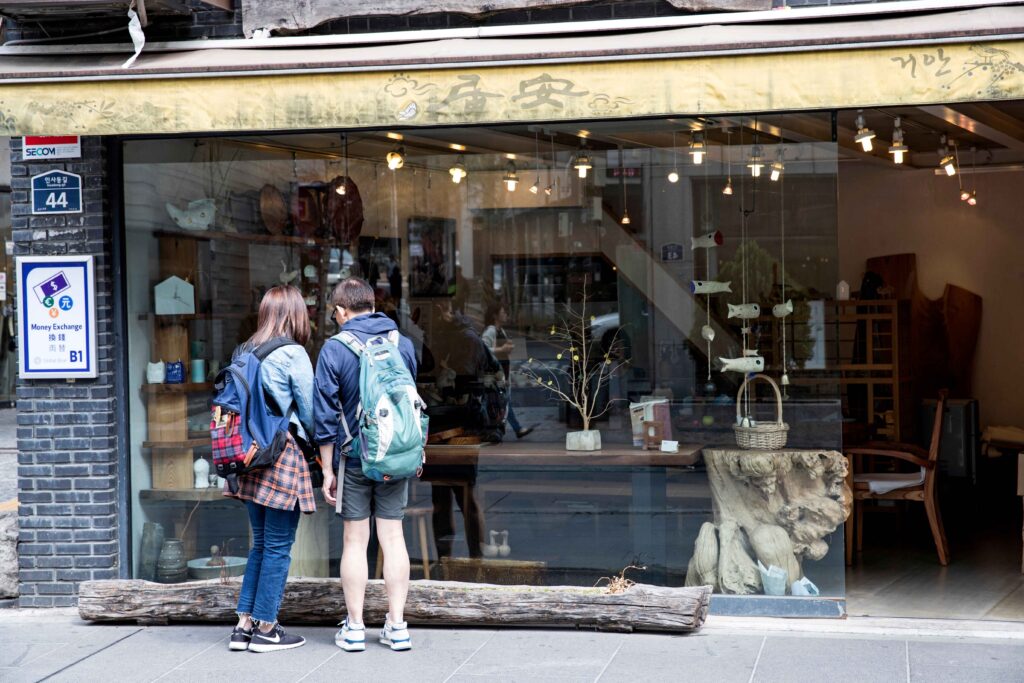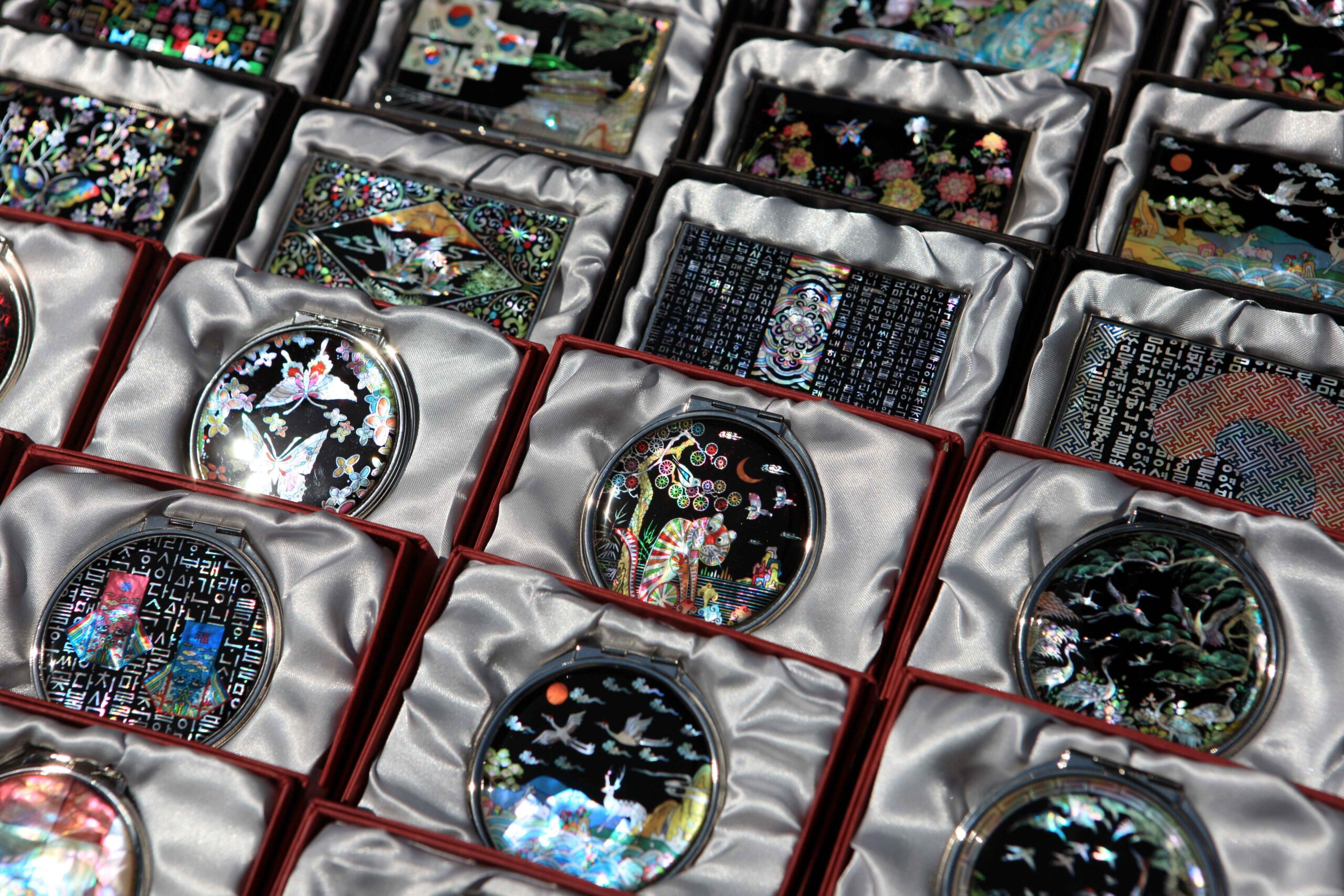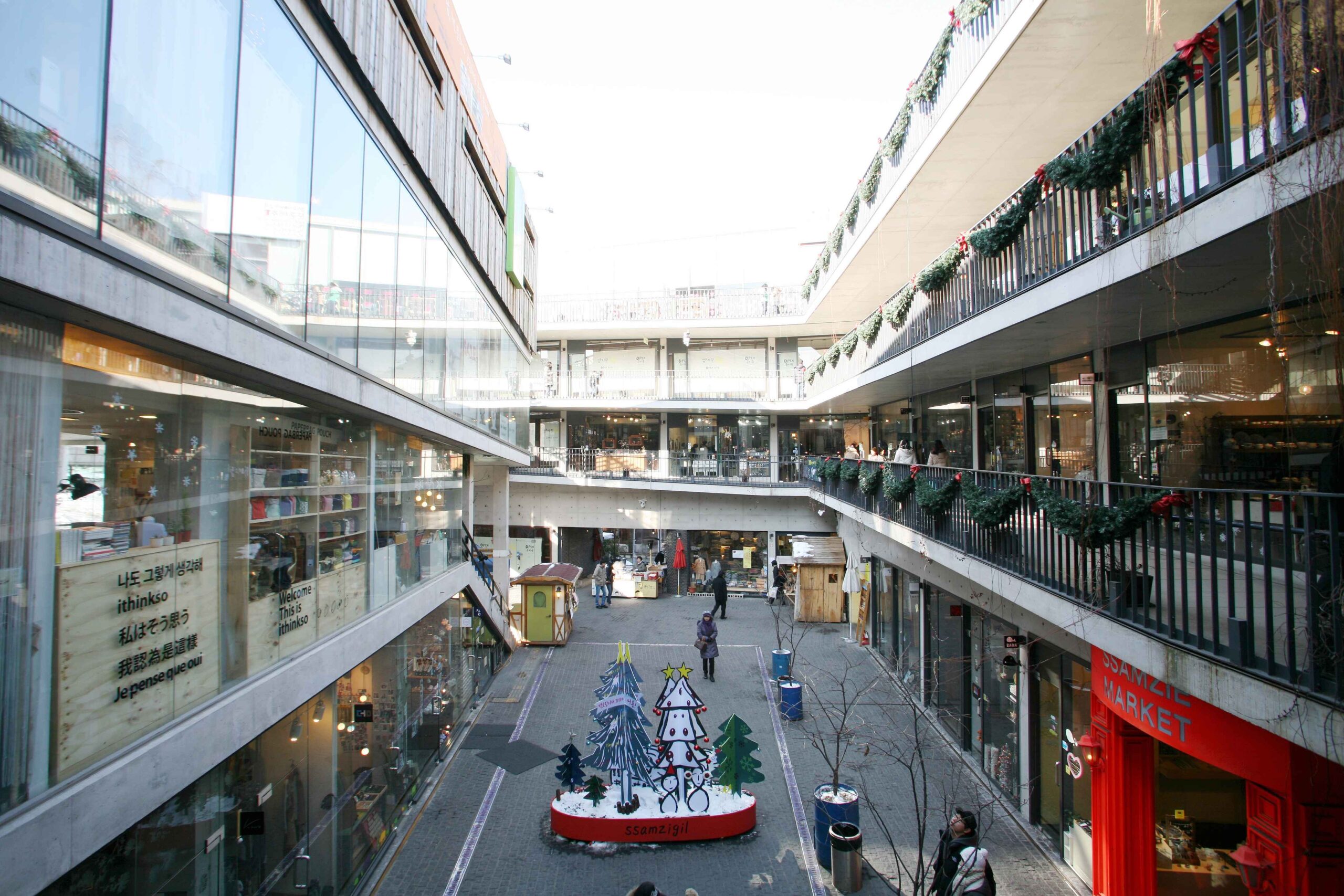Insadong Street is a vibrant cultural street located southeast of Gyeongbokgung Palace. The street runs vertically, with narrow alleys branching off and intertwining in a maze-like pattern, adding to its charm. Scattered throughout this labyrinth are art galleries, traditional craft and antique shops, tea houses, restaurants, and cozy cafes that exude a nostalgic ambiance.

Insadong Street © KTO – Lee Beomsu
Location
Insadong Street is within walking distance from Anguk Station on Subway Line 3.
Background of the Cultural Street Formation
Insadong was a place people frequented around 100 years ago for trading antiques such as ceramics, old paintings, and antique furniture. Over time, art galleries, frame shops, and stores selling traditional calligraphy supplies gradually gathered in the area. About 50 years ago, the first modern commercial art gallery opened, turning Insadong into a beloved street for artists, cultural figures, and art enthusiasts. In 2002, it was designated as Korea’s first cultural district. Today, it represents traditional Korean culture, featuring traditional goods, restaurants, and more.
Nicknamed the “Living Museum,” Insadong attracts numerous foreign tourists throughout all four seasons.
The flourishing trade of antiques in this area can be attributed to its historical background. Around 1910, with the fall of the Joseon Dynasty, the yangban class—the ruling elite—faced an accelerated decline. Many yangban families sold their valuable possessions to survive, with most buyers being Japanese officials stationed near Gyeongbokgung Palace at the Japanese Governor-General’s Office of Korea. These officials displayed a strong passion for collecting Korean antiques, naturally making Insadong a hub for active transactions.
Shopping
Visitors can explore an array of items that replicate or reimagine traditional Korean designs with a modern twist. While many of these products are manufactured in China, they still offer plenty of visual enjoyment. Occasionally, you may stumble upon rare treasures—artworks crafted by Korean ancestors or contemporary artists who honor and reinterpret these age-old techniques.
One of the notable spots in the area is Ssamziegil, a spiral-shaped shopping complex with a total floor area of 4,066.01 square meters. This unique structure houses over 70 stores selling traditional Korean crafts, creatively designed items reflecting Korean aesthetics, cultural products, and souvenirs. The building also includes galleries and restaurants, offering visitors a rich variety of experiences.


© KTO – Kim Jiho, Lee Beomsu
Gallery
With over 100 art galleries, Insadong offers an eclectic mix of exhibitions, from traditional Korean paintings to modern prints and sculptures. Notable galleries include Hakgojae, which played a central role in the Minjung Art movement, as well as Gana Gallery and Gana Art Center, which have supported numerous talented artists.
Food
Insadong boasts numerous restaurants serving traditional teas, Korean liquors, and authentic dishes, making it a perfect destination for a leisurely meal or group gathering. Tourists often stop to take photos against the backdrop of quaint and charming narrow alleys.
After soaking in the energy of Seoul’s royal palaces, Insadong Street is highly recommended as your next destination.
Insadong Traditional Culture Festival
Celebrated annually since 1987, the Insadong Traditional Culture Festival is a feast of Korean culture and art, hosted by the Insa Traditional Culture Preservation Association Corp. and the Ministry of Culture, Sports, and Tourism. The festival highlights include an international folk showcase, vibrant parades, and engaging singing contests.
Street events add to the festive atmosphere, with ceramic art demonstrations, portrait drawings by street artists, and opportunities to make traditional rice cakes.
Brand Franchises
While Insadong features familiar foreign franchises, what sets them apart is their deliberate effort to blend seamlessly with the district’s unique cultural atmosphere. For example, the Starbucks Insadong branch is the only one in Korea to display its signage in Hangul, emphasizing a distinctly Korean aesthetic. Similarly, other retail shops like Missha, Skinfood, and Etude House, which typically use English signage, all use Hangul signs in Insadong.